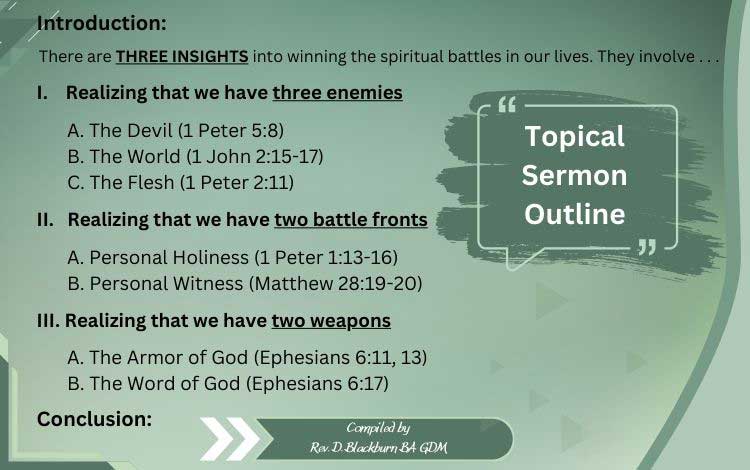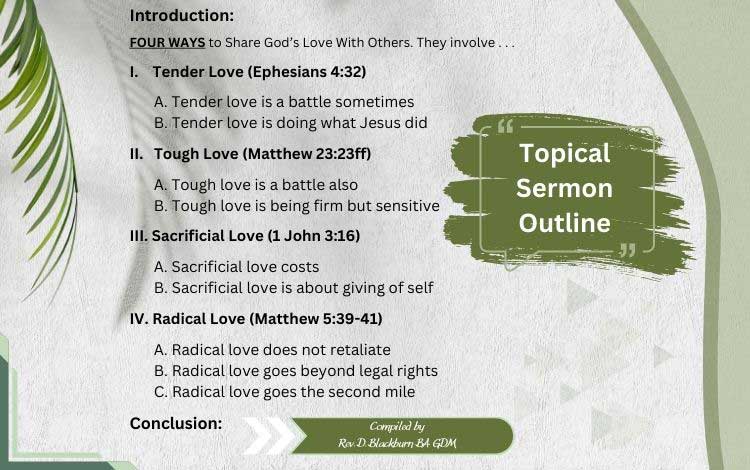7 Tips for Writing Topical Sermons include: 1) choose the topic, 2) study the topic, 3) select the main points, 4) create a sermon outline, 5) write content to sermon outline, 6) craft an introduction, and 7) write a conclusion.

7 Tips for Writing Topical Sermons
Writing a topical sermon requires careful preparation and a clear structure. A well-crafted sermon helps convey biblical truths in a way that is engaging, relevant, and transformative. Without proper organization, a message can become unclear or lose its impact.
These 7 tips will guide you in selecting a topic, organizing key points, and delivering a compelling topical sermon. Each step builds upon the next, ensuring your message is both biblically sound and practically applicable. Let’s explore how to create a powerful topical sermon.
1. Choose a Topic
A. Explanation
Selecting the right topic is crucial because it shapes the direction of your sermon. A well-chosen topic should be biblically sound, spiritually edifying, and relevant to your audience. It should address their spiritual needs and encourage them to grow in their faith.
A topical sermon should not focus on personal opinions or trending issues without biblical support. Instead, it should highlight biblical truths that guide, challenge, or encourage believers. A strong topic helps listeners connect with God’s Word and apply it to their daily lives.
B. Application
Pray for wisdom and discernment when choosing a topic. Ask God to reveal a message that aligns with Scripture and meets the needs of your audience. Study your congregation’s struggles, questions, and spiritual growth to select a topic that speaks directly to their situation.
Search the Bible for themes that provide encouragement, correction, or guidance. Consider topics like faith, perseverance, God’s promises, or God’s grace. Ensure that the topic has enough biblical depth to support a full sermon, allowing you to present a clear and powerful message.
C. Example
Here is an example of a topical sermon outline compiled by Rev. D. Blackburn BA GDM
INTRODUCTION:
There are three insights into winning the spiritual battles in our lives. They involve . . .
I. Realizing that we have three enemies
- The devil (1 Peter 5:8)
- The world (1 John 2:15-17)
- The Flesh or the sin nature (1 Peter 2:11)
II. Realizing that we have two battle fronts
- Personal holiness (1 Peter 1:13-16)
- Personal witness (Matthew 28:19-20)
III. Realizing that we have two weapons
- The Armor of God (Ephesians 6:11, 13)
- The Word of God (Ephesians 6:17)
CONCUSION:

2. Study the Topic
A. Explanation
A dynamic sermon requires thorough study and research. Exploring biblical commentaries, cross-references, and different translations helps clarify the topic and ensures accurate interpretation. Solid research strengthens your sermon and prevents misinterpretation.
Understanding the historical and cultural context of scripture is essential. Biblical events and teachings make more sense when viewed in their original setting. Studying the background of key passages helps you explain difficult concepts clearly and apply them accurately to modern life. Context brings depth to your sermon.
B. Application
Start by reading and meditating on relevant Bible passages. Compare different translations to gain fresh insights. Use study Bibles, lexicons, and biblical commentaries to dig deeper into the meaning of key verses. Take notes on important themes, patterns, and theological truths.
Examine the historical and cultural background of your topic. Research the customs, traditions, and audience of the biblical text. Identify how the original meaning applies today. Avoid assumptions by verifying facts with trusted sources. A well-studied topic leads to a well-delivered sermon.
3. Select the Main Points
A. Explanation
Key points form the backbone of a topical sermon. They organize your thoughts and create a logical flow. Without clear main points, the sermon may seem scattered or confusing. Well-structured points ensure cohesion and help listeners understand and apply the message effectively.
Each main point should directly support the topic. Sub-points can expand or clarify the message, while incidental points should not distract from the core idea. Keeping a balanced structure prevents unnecessary details from overwhelming the audience and keeps the sermon focused.
B. Application
Break your topic into two to four main points. Each point should address a different aspect of the subject while maintaining a smooth progression. Arrange them logically to guide the listener toward a clear conclusion. Keep points concise and biblically supported.
Use sub-points to provide explanations, scriptural references, or applications (see the topical sermon outline above). Ensure they strengthen the main points rather than introduce unrelated ideas. Avoid overloading your sermon with excessive information. A well-structured outline keeps your message clear, engaging, and impactful.
4. Create a Sermon Outline
A. Explanation
A sermon outline provides structure and direction. It organizes key points, sub-points, and supporting scriptures, ensuring a logical flow. Without an outline, the message may lack clarity, making it harder for the audience to follow and apply. A well-planned outline keeps the sermon focused and impactful.
A good outline includes an introduction, main points, and a conclusion. Each section should connect smoothly, creating cohesion throughout the sermon. Incidental points should not distract from the core message. A clear structure helps the preacher stay on track and delivers a more engaging message.
B. Application
Start with a simple outline: introduction, body, and conclusion. List key points and arrange them in a logical order. Add sub-points to expand ideas and include relevant Bible verses. Keep the structure flexible, allowing adjustments as the message develops.
Use transitions between points to maintain flow. Each section should connect naturally, reinforcing the central theme. Avoid cramming too much information into one point. A well-organized sermon outline helps both the preacher and the audience stay engaged and focused.
5. Write Content to Sermon Outline
A. Explanation
Writing content expands and explains the sermon outline. Each key point needs supporting details, scriptural references, and practical applications. Without well-developed content, the sermon may feel shallow or incomplete. Strong explanations help listeners grasp biblical truths and apply them to their lives.
Illustrations and real-life examples make sermons more engaging. They clarify difficult concepts and create emotional connections. Transitions between points should be smooth to maintain flow. A well-written sermon guides the audience from one idea to the next without confusion or distraction.
B. Application
Expand each key point with clear explanations. Use scripture to support your statements and provide context. Avoid vague or overly complex language. Keep sentences clear and direct, ensuring the message remains accessible and impactful. Strong content deepens understanding and encourages spiritual growth.
Use illustrations, testimonies, and real-life examples to make concepts relatable. Apply biblical truths to everyday situations. Ensure transitions between points are natural, helping the audience follow the message easily. A well-written sermon should educate, inspire, and challenge listeners to apply God’s Word.
6. Craft an Introduction
A. Explanation
A strong introduction grabs attention and sets the stage for the sermon. Listeners quickly decide whether to stay engaged or lose interest. A compelling start makes them eager to hear more. The introduction should create curiosity, establish relevance, and smoothly lead into the main preaching topic.
An effective introduction is concise and purposeful. It introduces the topic without overwhelming the audience with too much information. Using a thought-provoking question, powerful quote, or relevant story can make the opening memorable. A well-crafted introduction prepares hearts and minds to receive the message.
B. Application
Start with a hook that captures interest. Ask a question, share a short personal story, or present a surprising fact. Ensure it connects directly to the sermon topic. Avoid unnecessary details that might distract from the main message. Keep it brief yet powerful.
Clearly state what the sermon is about and why it matters. Explain how the topic relates to the audience’s spiritual needs. Transition smoothly into the first main point. A strong introduction builds anticipation, guiding listeners toward a meaningful encounter with God’s Word.
7. Write a Conclusion
A. Explanation
A strong conclusion reinforces the message and leaves a lasting impression. It should summarize the main points without repeating everything. A well-crafted ending helps listeners remember the key lessons and apply them to their lives. A weak conclusion can make the sermon feel incomplete or forgettable.
Every sermon should end with a clear purpose. A conclusion should provide a call to action, challenge the audience, or extend an invitation. Whether urging repentance, encouraging faith, or prompting obedience, the final words should inspire a response. A powerful conclusion moves hearts toward spiritual growth.
B. Application
Recap the main ideas in a few sentences. Highlight the core message without unnecessary repetition. Use a final scripture, thought-provoking statement, or memorable illustration to reinforce the lesson. Keep it concise, impactful, and aligned with the sermon’s theme.
Provide a call to action that challenges listeners to respond. Invite them to pray, reflect, or take a specific step of faith. If appropriate, extend an invitation for salvation or renewal. A well-delivered conclusion ensures the sermon has a meaningful and lasting impact.
Conclusion
Writing a topical sermon requires careful preparation and a clear structure. Each step builds upon the next, ensuring a well-organized and impactful message. Without proper planning, the sermon may lack clarity and fail to engage listeners.
By choosing the right topic, studying it deeply, and structuring key points effectively, you create a message that resonates. A strong introduction captures attention, while a compelling conclusion reinforces the lesson. Preaching with clarity and purpose leads to spiritual growth and transformation.

Source Material
Biblical Preaching by Haddon Robinson
Christ-Centered Preaching by Bryan Chapell
Communicating For A Change by Andy Stanley
How To Preach Without Notes by Charles Koller
How To Prepare Bible Messages by James Braga
Preach and Deliver by Brandon Hilgemann
Preaching Nuts and Bolts by Brandon Hilgemann
Preaching Sticky Sermons by Brandon Kelley
The Homiletical Plot by Eugene Lowry